Bright, extremely useful and adored by children tomato "Duckling" for growing in greenhouses and in the open field
The medicinal properties of the Duckling tomato became known only a few years ago. The vegetable is rich in minerals necessary for the normal functioning of the body, is actively used in dietary nutrition, and effectively resists the development of oncological diseases.
In addition to the benefits, the Duckling is also extremely tasty. The sweetish fruits are suitable for juices, preservation and fresh use. Where and how to properly grow a "home doctor", what features the variety possesses, read in our article.
The content of the article
Characteristics and description of the variety
The duckling was bred by Russian breeders and entered in the State Register as a variety intended for growing in open ground, a greenhouse and a greenhouse. These tomatoes are not demanding on temperature indicators and are able to grow even in regions with cold climates.
The shape of the fruit is oval with a small nose. From a distance, the outlines of a tomato resemble a heart-shaped shape. The average weight of one vegetable is 60-90 g. Tomatoes are well preserved during transportation, even over long distances, and do not lose their presentation. Also tomatoes are perfectly stored for a long time.
The only disadvantage of the variety is its low yield. From 1 sq. m collect no more than 2-3 kg of fruit.
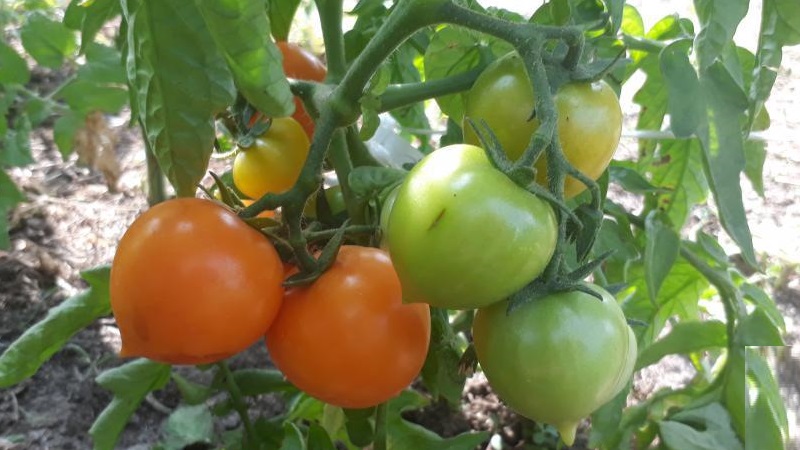
Distinctive features
The undersized bush has a standard shape. The plant reaches 60-70 cm in height. When grown in a greenhouse or under a film cover, some bushes grow up to 1 m. There are few leaves on the plant, they have a deep green color. Plants do not need a garter and formation.
The variety has a stable immunity to late blight and other diseases that tomatoes are exposed to. Highly fertile soil is chosen for growing the Duckling.
How to grow seedlings
For growing seedlings, seeds are sown in March-April. Grains are planted in open ground in May-June. Direct sowing is possible when the soil warms up to at least 15 degrees.
Seed preparation
If the packaging with seed material it is not indicated that the processing has already been carried out, the grains are disinfected independently. To do this, they are placed in a 1% solution of potassium permanganate and kept there for no more than 30 minutes; then washed with clean water and slightly dried.
On a note! For easy extraction from the solution, the seeds are wrapped in gauze before soaking.
If the planting material has already been disinfected by the manufacturer, it is simply kept under running clean water at room temperature, since the swollen seeds germinate better.
In order for the seedlings to sprout quickly, the grains are pre-germinated. To do this, they are wrapped in a dampened cotton cloth, gauze or paper towel, placed in a plastic bag and placed on a battery. The seeds are periodically checked and, if necessary, moistened, preventing drying out.
When the seeds hatch (usually it takes 3-5 days), they start sowing. Those that did not sprout are rejected, since they are hollow.
Capacity and soil
Sphagnum peat cups or tablets are the most popular container for growing tomato seedlings (sphagnum acts as a reliable protection of the roots from rotting). When transplanting, tomato seedlings are placed in a prepared hole in an open bed together with a peat glass.
They also use containers made by themselves. The most suitable are plastic glasses or cut plastic bottles. They also cut cardboard boxes from under the juice to the required level, use packaging for dairy products. The optimal volume of an improvised container is 0.5 liters, this allows the seedlings not to dive. If 100 ml cups are used, the seedlings are grown until 2-3 true leaves appear.
In home-made containers, drainage holes are made at the bottom so that excess liquid does not accumulate after watering.
For your information. When seedlings transplanted to a permanent place of growth, it is taken out of a plastic glass along with the soil.
Sowing
Seeds are sown for seedlings in late March - early April. The grains are embedded to a depth of 1.5-2 cm. Then the container is covered with a film or glass and left in this form until the first shoots appear. After that, the seedlings are transferred to the lightest windowsill or illuminated with phytolamps.
Important! Even the smallest drafts can destroy young shoots, as the soil in the containers cools quickly.
Growing and care
You cannot over-water the seedlings. Even if the top layer of the soil is dry, the soil inside the container remains moist for some time. If the sun is shining brightly, the seedlings should also not be waterlogged. This is because by the evening the sun will hide, and young plants will remain in the cold and moisture for the whole night. The first time the seedlings are watered about a week after sowing.
Important! Young plants need to be watered only with settled and warm water.
When the first 2-3 true leaves appear on the sprout, a dive is made. Tomatoes are transplanted into a separate, more spacious container. So the plants will get stronger faster and gain strength.
The first fertilizer is applied 2-3 weeks after the emergence of sprouts, and the subsequent ones - every seven days.
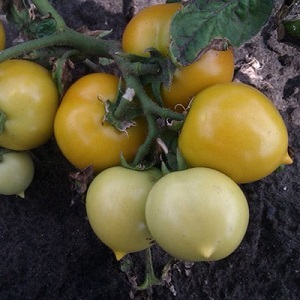 For fertilization, mix:
For fertilization, mix:
- 3 g of potassium sulfate;
- 1 g of urea;
- 8 g superphosphate;
- 2 liters of water.
Yeast infusion is also prepared at home:
- 5 g of bread yeast is diluted in 5 l of water;
- stir thoroughly;
- insist within 24 hours.
The yeast solution cannot be stored. It is used immediately after preparation.
Ash infusion is also prepared as a top dressing:
- 1 tbsp. a spoonful of wood ash;
- 2 liters of water.
The solution is mixed well and allowed to brew for a day, after which it is filtered.
For your information. An alternative option is peat tablets, in which seeds are planted for seedlings instead of artificial containers. They enrich the soil with nutrients and give additional air permeability to the soil, which has a positive effect on the formation of the root system.
With proper care of the seedlings, by the end of the second week, the plants become strong, stocky and acquire a bright green color.
How to grow tomatoes
Proper cultivation of a tomato Duckling consists in timely watering, loosening the soil and regularly weeding the beds from small weeds. The culture has good resistance to most diseases, but it is better to play it safe and treat the soil with a weak solution of potassium permanganate.
Landing
Plants are transplanted to a permanent place of growth in mid-June.
For full growth and fruiting, the following substances must be in the soil:
- nitrogen;
- potassium;
- phosphorus.
Important! The culture is planted in open ground according to the 40 × 60 cm scheme.
Care
Tomatoes are fertilized at least three times:
- First fertilization applied two weeks after planting the plant in a permanent place. For this, mullein or bird droppings are used (700 g per 10 liters of water). Also used the purchased ready-made preparations "Gumisol" or "Vermisil".
- When flowers appear on the second brush, top dressing is applied a second time. Tomatoes are fertilized with a superphosphate solution (a glass in a bucket of water).
- Third feeding spend when the first fruits begin to ripen.Apply a mullein solution with the addition of complex fertilizer (75 g per bucket). At least 2 liters of solution are poured under each bush.
Tomatoes are watered every 3-4 days. In dry weather, the crop is moistened more often. The recommended watering rate is approximately 15 liters per 1 sq. meter.
After moistening the soil, when the water is well absorbed, loosening is carried out and at the same time weeds are removed. Since the adult plant grows small, it does not need a garter. Also, culture does not need to be formed.
Important! To ensure that the bush is well ventilated and receives the maximum amount of sunlight, once a week they spend pinching.
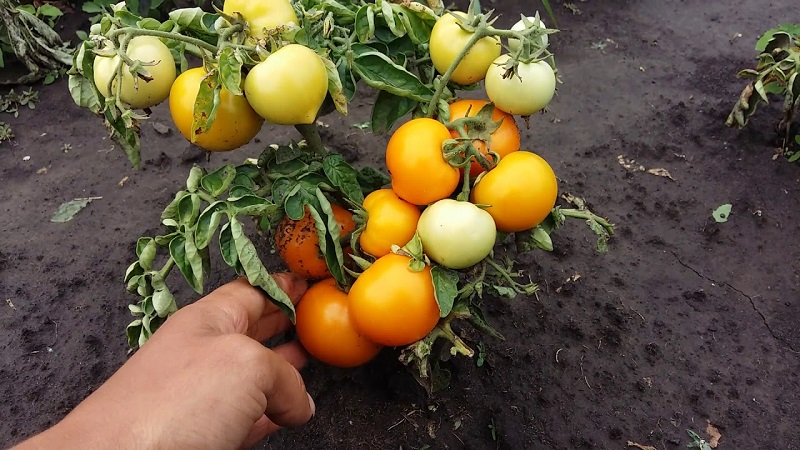
Features of cultivation and possible difficulties
Although the plant has strong immunity, some difficulties in growing tomatoes are possible. Each grower plants a crop in his own way, everywhere a different soil structure, which leads to certain problems.
When the flowers and ovaries crumble from a plant, this means that the bushes have enough food and moisture. If tomatoes are grown in a greenhouse, the cause is sometimes a lack of ventilation or rotting of the fruit. To eliminate the problem, regular watering with water at room temperature is carried out. Depending on weather conditions, the volume glaze needs to be regulated.
If the flowers and ovaries crumble from rot on the top of the bush, then control the ventilation and systematic watering.
Diseases and pests
Variety Duckling is resistant to diseases that are typical for tomatoes, as well as to fusarium, late blight, apical and root rot. For prevention purposes, the bushes are treated with a solution of boric acid.
Of the pests for tomatoes are dangerous:
- spider mite;
- thrips;
- slugs;
- Colorado beetle.
Chemicals destroy pests immediately after spraying the bushes, but with this treatment, the fruits cannot be eaten for a long time - from 10 to 21 days.
Biological products act more slowly, the death of insects and larvae occurs 3-5 days after spraying. But vegetables are allowed to be eaten within 5-7 days after processing.
They also get rid of pests with the help of folk remedies:
- To eliminate insects, a soap-ash solution is used. It is prepared from 1 kg of the product and 10 liters of water. First, the ash is boiled for 15 minutes, then they let it brew for two days and filter. The resulting solution is diluted with another 10 liters of water. As an "adhesive" add 50 g of soap to 10 liters of solution.
- Garlic infusion is effective. 200 g of crushed garlic or onion is added to 10 liters of water and allowed to brew for a day. Strong pungent odor repels pests.
The nuances of growing in open ground and in a greenhouse
The Duckling tomato variety is grown in almost all regions of Russia. In the southern regions, tomatoes are planted directly in open ground, in areas with a temperate and average climate - in greenhouses and hotbeds, and only then on the beds.
Harvesting and application of the crop
The crop is harvested in July-August. Duckling Tomatoes are a unique tomato variety known for their beneficial properties. The fruits are used for making dietary food, they are suitable for eating for diabetics. Tomatoes are used to prevent cancer.
In cooking, tomatoes are used to prepare various snacks, salads, and add to first courses. The fruits are suitable for conservation and pickling as a whole. They also make delicious healthy juice from tomatoes.
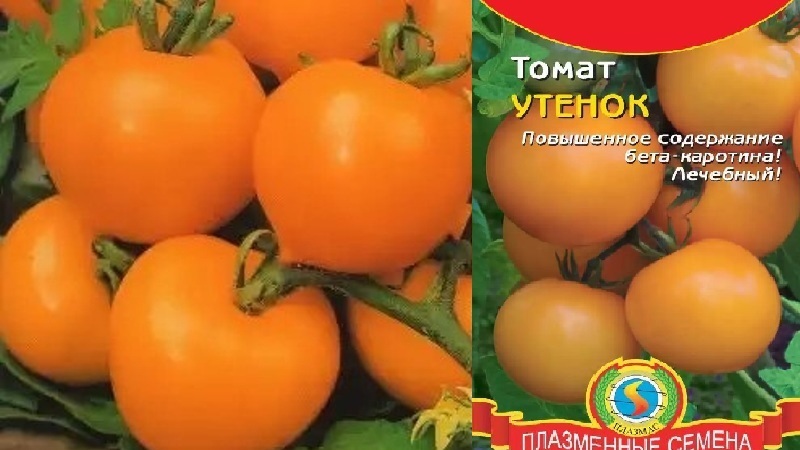
Advantages and disadvantages of the variety
After repeated cultivation of the Duckling tomato, vegetable growers have highlighted the following advantages:
- the variety has strong immunity and is resistant to rotting of the upper and lower parts of the plant;
- the crop ripens in about one period;
- early ripe tomatoes;
- the bushes are compact, which simplifies maintenance;
- tomatoes have medicinal properties;
- bushes do not need shaping, garter and pinching.
There are practically no downsides to culture. The only negative feature is that the variety does not produce a bountiful harvest.
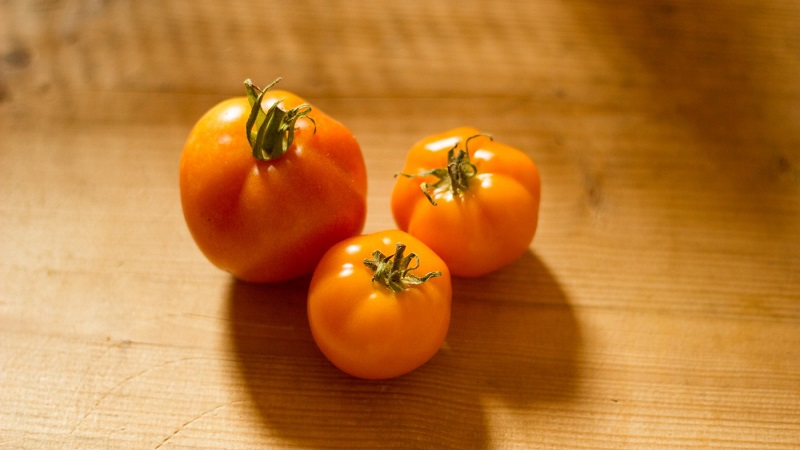
Farmers reviews
Gardeners respond mostly positively to the Duckling tomato. Consider some of the gardeners' opinions.
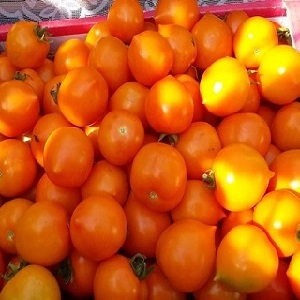 Natalia Malinovskaya: “I planted this tomato for the first time in 2010. I cultivated it in the open field. The plant was covered with a film. Opened bushes during the day. One day in mid-May on a cold night from the wind, my greenhouse opened, and some bushes froze. But despite this, the plant gave birth to stepchildren and pleased with fruiting. In general, I liked the Duckling variety. "
Natalia Malinovskaya: “I planted this tomato for the first time in 2010. I cultivated it in the open field. The plant was covered with a film. Opened bushes during the day. One day in mid-May on a cold night from the wind, my greenhouse opened, and some bushes froze. But despite this, the plant gave birth to stepchildren and pleased with fruiting. In general, I liked the Duckling variety. "
Olga Mitkevich: “I have been growing this variety for five years in a row. I plant a lot of bushes at once. Plants feel great outdoors. The fruits are stored well. Tomatoes look very beautiful in the garden, just like in the photo. I make canning from them, prepare salads. "
Ekaterina Ivanova: “About this variety I will say right away that it is not difficult to grow these tomatoes. We have many who grow them. Tomatoes have worked well. My children love to eat them, and most importantly, they are healthy tomatoes. I also liked the way they look in the bank. I treat my relatives with preservation. Everyone likes it, everyone praises me, I will continue to grow them. "
Conclusion
The Duckling variety has proven itself well on the positive side. The duckling is unpretentious in growing, which is already a big plus. The plant has a strong immunity to pests and diseases, the fruits ripen quickly. Both children and adults like fruits. Thanks to the yellow color and excellent taste, beautiful preservation, you will pleasantly surprise your guests and neighbors.